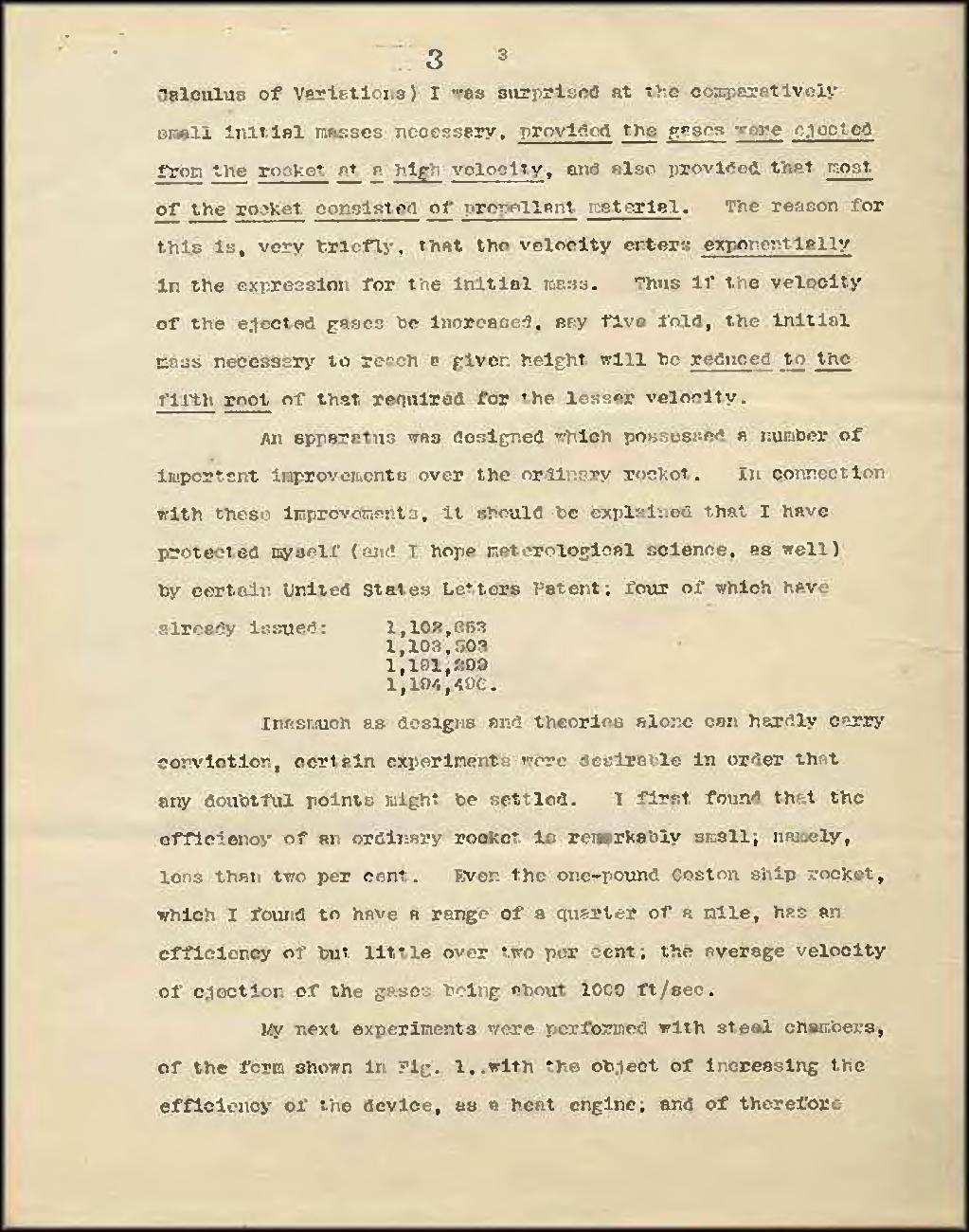3
Calculus of Variations) I was surprised at the comparatively small initial masses necessary, provided the gases were ejected from the rocket at a high velocity, and also provided that most of the rocket consisted of propellant material. The reason for this is, very briefly, that the velocity enters exponentially in the expression for the initial mass. Thus if the velocity of the ejected gases be increased, say five fold, the initial mass necessary to reach a given height will be reduced to the fifth root of that required for the lesser velocity.
An apparatus was designed which possessed a number of important improvements over the ordinary rocket. In connection with these improvements, it should be explained that I have protected myself (and I hope meterological science, as well) by certain United States Letters Patent; four of which have already issued:
1,102,653
1,103,503
1,191,299
1,194,496.
Inasmuch as designs and theories alone can hardly carry conviction, certain experiments were desirable in order that any doubtful points might be settled. I first found that the efficiency of an ordinary rocket is remarkably small; namely, less than two per cent. Even the one-pound Coston ship rocket, which I found to have a range of a quarter of a mile, has an efficiency of but little over two per cent; the average velocity of ejection of the gases being about 1000 ft/sec.
My next experiments were performed with steel chambers, of the form shown in Fig. 1, with the object of increasing the efficiency of the device, as a heat engine; and of therefore
